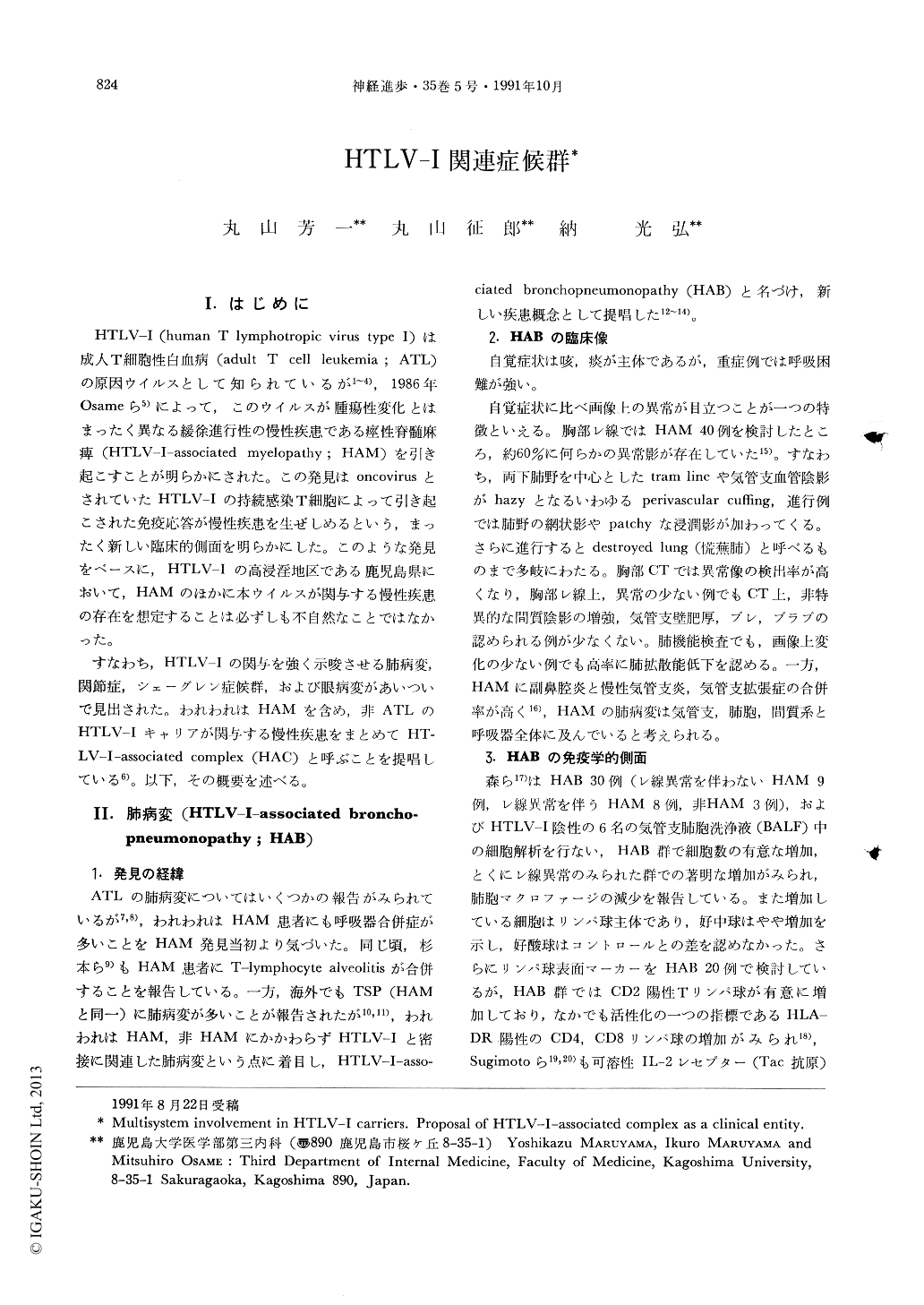Japanese
English
- 有料閲覧
- Abstract 文献概要
- 1ページ目 Look Inside
I.はじめに
HTLV-I(human T lymphotropic virus type I)は成人T細胞性白血病(adult T cell leukemia;ATL)の原因ウイルスとして知られているが1~4),1986年Osameら5)によって,このウイルスが腫瘍性変化とはまったく異なる緩徐進行性の慢性疾患である痙性脊髄麻痺(HTLV-I-associated myelopathy;HAM)を引き起こすことが明らかにされた。この発見はoncovirusとされていたHTIV-Iの持続感染T細胞によって引き起こされた免疫応答が慢性疾患を生ぜしめるという,まったく新しい臨床的側面を明らかにした。このような発見をベースに,HTLV-Iの高浸淫地区である鹿児島県において,HAMのほかに本ウイルスが関与する慢性疾患の存在を想定することは必ずしも不自然なことではなかった。
すなわち,HTLV-Iの関与を強く示唆させる肺病変,関節症,シェーグレン症候群,および眼病変があいついで見出された。われわれはHAMを含め,非ATLのHTLV-Iキャリアが関与する慢性疾患をまとめてHT-LV-I-associated complex(HAC)と呼ぶことを提唱している6)。以下,その概要を述べる。
Human T-lymphotropic virus type I (HTLV-I) causes not only adult T-cell leukemia but also a chronic form of myelopathy called HTLV-I-associated myelopathy (HAM) or HTLV-I-associated tropical spastic paraparesis (TSP). HAM and TSP are now regarded as the same diseases based on their clinical features and virological findings.
We have been investigating immunologic abnormalities in HAM patients. The patients showed polyclonal hypergammaglobulinemia (mainly IgG and IgA) with markedly increased titer of anti-HTLV-I antibodies in serum and cerebrospinal fluid. Increased IL-I mRNA in the peripheral blood lymphocytes was shown by in situ hybridization.

Copyright © 1991, Igaku-Shoin Ltd. All rights reserved.


